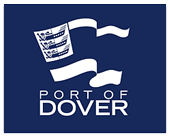
Since 2007, the Port of Dover has been working towards reducing its carbon footprint – and it has managed to do so by 85 per cent over the last 15 years.
But it seems that it won’t be stopping there, with a new announcement unveiling three new decarbonisation targets: to be carbon net zero by 2025 (direct and indirect emissions), to be carbon net zero by 2030 (all other emissions associated with activity) and to become the world’s first (high-volume) green shipping corridor.
It’s expected that trade through this particular port will grow and expand in the future and the
aim is for this commitment to deliver on the ambition for clean maritime growth, as set out in
the Department for Transport’s Maritime 2050 strategy, the Clean Maritime Plan and the
Clydebank Declaration.
Currently, the Port of Dover handles £144 billion of trade and provides nearly 60 per cent of
all ferry journeys between the UK and Europe, carrying approximately one-third of heavy
goods vehicles using UK seaports.
Doug Bannister, Port of Dover chief executive, said: “Dover is located at a critical
intersection where global trade routes meet the primary gateway between the UK and its
main trading partner, the EU. Having the fastest transit times and the most frequent services
situated next to the world’s busiest shipping lane, we already lead the way in how much
activity takes place here.
“We can and must, therefore, also lead the way by delivering a profound improvement in the
overall carbon footprint of UK supply chains, which we can do much faster because of our
geographic advantage.”
The Clydebank Declaration was unveiled at COP26 in Glasgow in November last year, with
signatories supporting the establishment of green shipping corridors between two or more
ports, with zero-emission maritime routes. The collective aim is to support at least six green
corridors by the middle of the decade.
Bulk material handling companies looking to strengthen their position could benefit from
MHEA membership. Get in touch with us today to find out more





